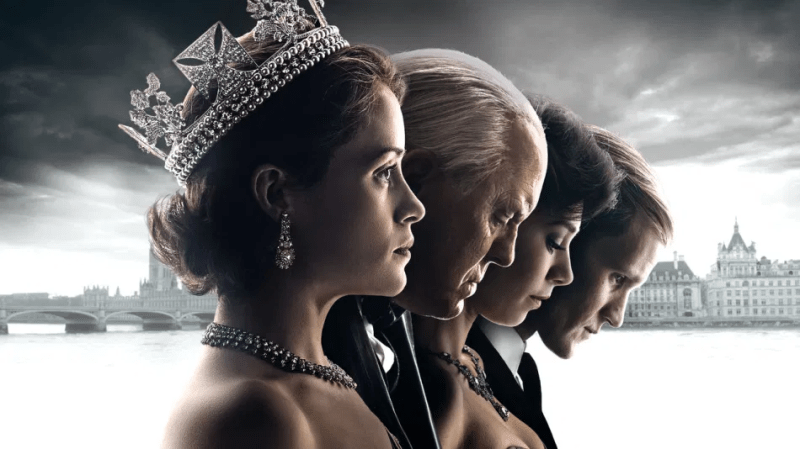The Netflix historical drama “The Crown” takes its viewers on an enticing journey through the British monarchy. This show is made for a wide audience: from history nerds to those not familiar with British history. It provides a nice overview of historical events and their significance for Britain and the world. The drama has been criticized for being overly dramatic and not depicting fact, however.
“The Crown” opens roughly two years after the conclusion of World War II, with Prince Philip resigning his titles in order to join the British royal family. It currently ends in season four with the fall of former Prime Minister Margaret Thatcher and the troubling marriage of Prince Charles (played by Josh O’Connor) and the late Princess Diana (played by Emma Corrin).
The four available seasons are organized in many different and interesting ways. One way includes the “split” between actors portraying the royal family. The first two seasons star Claire Foy as young Queen Elizabeth II (“Season of the Witch,” 2011) and Matt Smith (BBC’s “Doctor Who”) as young Prince Philip, Duke of Edinburgh. The latter two seasons star Olivia Colman as an older queen and Tobias Menzies as an older Prince Philip.
I was thrown off by the change in cast at the start of season three because of how impressed I was with Foy and Smith’s portrayals of the royal couple, but I soon became a fan of Colman and Menzies.
The show’s acting is far from short. The cast has received numerous accolades, including Colman and Foy who both won Golden Globes for “Best Performance by an Actress in a Television Series – Drama.” Other actors’ portrayals are equally impressive. Josh O’Connor’s Prince Charles is particularly convincing to me.
The series is primarily centered around Queen Elizabeth II, yet it profiles other main members of the family and British Parliament. This is one of my favorite aspects of the series. While it makes sense for the queen to be at the center of “The Crown,” the writers’ effort to individualize other characters brings the monarchy to life. For example, the series lets us in on the minds and experiences of Prince Philip and his son Prince Charles, among other characters. Aside from being the queen’s husband or son, we learn more about the complex identities of these characters. The show creatively and successfully balances the focal point of Her Majesty with other members of the monarchy, as well as important political figures.
The historical content of the show is another one of its great assets. Not only do we learn about the inner workings of the royal family, we also learn about British politics, history and the nation’s stance in the world.
Although the show does not go into great depth about the nation’s history, I appreciate its showcase of prime ministers, relations with the larger Commonwealth and the United States and changing trends and ideologies — something main characters grapple with.
I find the show captivating yet educational (to some degree, of course). “The Crown” makes British history and history of the family exciting by contextualizing familial, national and international events with each other.
In order to bring history to life, “The Crown” transports viewers to a different time through its commitment to details.
Props used on the show give us a glimpse of British life in the mid-1900s. Television sets play black-and-white footage of news. We see characters listen to the radio and use typewriters, and telephone operators connect the royals to private phone lines.
The sets and settings seen throughout the series are stunning. Buckingham Palace is a common setting in the series. We get a sense of the intensity and wonder felt on a visit to the palace from the initial moments when cars drive through the palace gates. Characters are followed from the gates, through the doors and up the main staircase on their visits with the queen. The palace’s different rooms and antique props make the show so appealing.
Monumental moments like the queen’s coronation are epic. Accurate recreations of these events make the historical aspect of the drama come to life. Scenes like Prince Charles and Princess Diana’s dance at a ball in Australia are very similar to the actual event.
The show’s cinematography enhances its attractiveness. Different angles and technology used to film add complexity to scenes and help make them more believable. Vintage cars are frequently seen driving guests to the palace; however, such scenes were filmed with the help of green screen technology.
The show’s consistency makes the experience much more enjoyable. For instance, televised scenes of the royals were recreated with the show’s cast and filmed in black and white. These minor details contribute to the authenticity of the show.
Different camera angles make scenes more interesting. Show cinematographer Adriano Goldman makes us feel like we are walking through the halls of Buckingham Palace and other grand venues. The lighting also makes scenes feel more antique. I am amazed by how Goldman uses the camera to deliver the past through crisp visuals.
“The Crown” does not disappoint. The historical drama currently has 39 Emmy nominations and 10 Emmy Awards, and is renewed for two final seasons with a new cast. The show’s delivery of the grandeur of the past is praiseworthy. The series is an experience that has left me wanting to visit Buckingham Palace even more.
Contact Rosana Maris Arias at rosmar18 ‘at’ stanford.edu.
